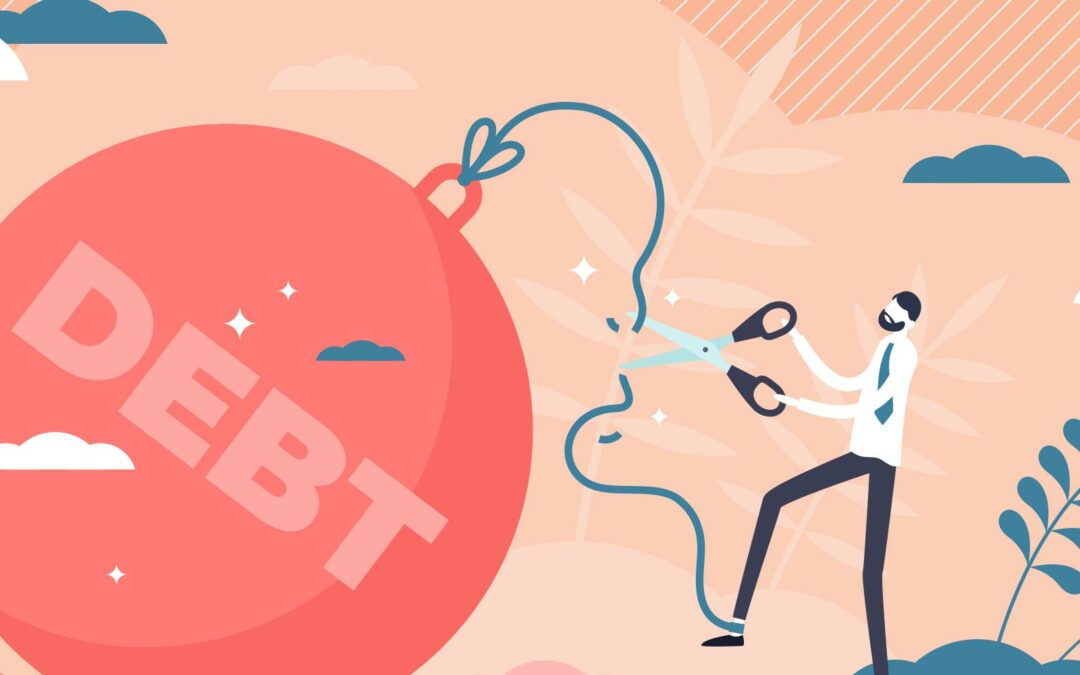Americans are in debt due to mortgages, credit cards, personal loans, bills, and student loans, and the overall amount owed is increasing. Nobody tries to go into debt. It’s one of those things that happens without your knowledge and may even feel out of control. Getting into debt, for whatever reason, can be stressful. You are unsure whether you will be able to repay the debt. That is why it is preferable to avoid incurring debt.
It is not easy to get out of debt. It can be challenging to keep up with monthly expenditures and save for a rainy day, let alone pay the minimum monthly payments on your credit card.
Being in debt can make it challenging to qualify for other loans. For example, most lenders want a debt-to-income (DTI) ratio of 43 percent or less to buy a house, including future mortgage payments.
Personal Debt in the United States will reach an all-time high in 2020 if you are deeply in debt. Stop using your high-interest credit cards immediately and devise a strategy to pay off your obligations. Some financial experts advise first paying off your credit cards with the highest interest rates. For people who are having difficulty repaying their college loans, there are student loan forgiveness programs and income-based repayment plans available. Debt can have an effect on both your mental and physical health over time. Fortunately, numerous strategies to get out of debt will not make you unhappy.
Steps to follow to get out of debt
1. Start Paying More Than the Minimum
You may stifle your development if you merely pay the minimum balance on your credit cards. You’d be paying off the debt for ten years if you simply paid the minimum — and it doesn’t even consider subsequent purchases. In this case, you are paying slightly more than double the minimum payment would result in debt repayment in three years while saving money on interest.
Examine your credit card accounts to determine if you may shorten the amount of time you are in debt by paying more than the minimum.
2.Make a Debt Payoff Plan
Once you’ve determined that you need to pay more than the minimum and identified the waste in your budget, you may devise a debt repayment strategy. An intelligent approach helps keep you on track while also providing you to strive for.
The debt snowball and the debt avalanche are two of the most popular debt-reduction strategies. These tactics advocate tackling one debt at a time with all of your additional cash while paying the minimum on the remaining bills.
3.Organize all of your debt and bills
Before you can develop a debt-reduction strategy, make a list of all of your existing expenses and loans. Examine your bank and credit card statements from the last six months and list all recurring loans, invoices, and other fixed expenses.
Include the monthly payment, total balance, interest rate, period, and other pertinent information on your list. For example, keep track of whether debts are currently in deferment or on a special repayment plan.
4.Initiate Damage Control
Get rid of bothersome accounts and make on-time payments on your overall debt. Set up recurring payments and tighten your budget to get your debt under control. This will prevent your credit rating from deteriorating and, in time, improve it. If your credit score allows, try to obtain a more significant, lower-interest loan and consolidate all of your consumer bills into this loan. This will expedite the debt repayment process by reducing the interest drain on your payments.
Ways to Avoid getting debt
1.Create a monthly budget
When you have a budget, you can see where your money is going and limit your spending. Budgeting can be done at the beginning of the month.
Make sure you prioritize your needs first, such as monthly bills, installment payments (if applicable), and buying for daily basics, meals, and so on. Following that, you must set aside money for savings.
2.Don’t buy it if you can’t afford it.
Living under the idea that you can purchase things you cannot afford is one of the most harmful aspects of using a credit card. One fair rule of thumb is that if you can’t pay for anything with cash, you can’t afford it with a credit card.
3.Have an emergency fund
When an unforeseen event occurs, you can feel the strength of an emergency fund. If you don’t have any emergency funds, you’re more likely to borrow money to deal with a crisis.
Borrowing money implies that you are in debt. You must create an emergency fund if you do not want to go into debt. The sum does not have to be enormous or paid entirely at once. You can begin saving in little increments. It is preferable to save consistently rather than infrequently.
4.Remove the wants and concentrate on the needs.
There is always room in your budget to eliminate wasteful spending habits. This could include only going out to eat at your favorite restaurant once a month or limiting your internet purchasing. The more you stop wants and spend just on necessities, the better your money will be.
Marking your progress is essential for keeping motivated to get out of debt faster. Maintain a chart and see if you can accelerate the process. When you accomplish payoff milestones, celebrate. Your best outcomes will come from learning the process and striving to pay off your debt faster than you had intended.


Recent Comments